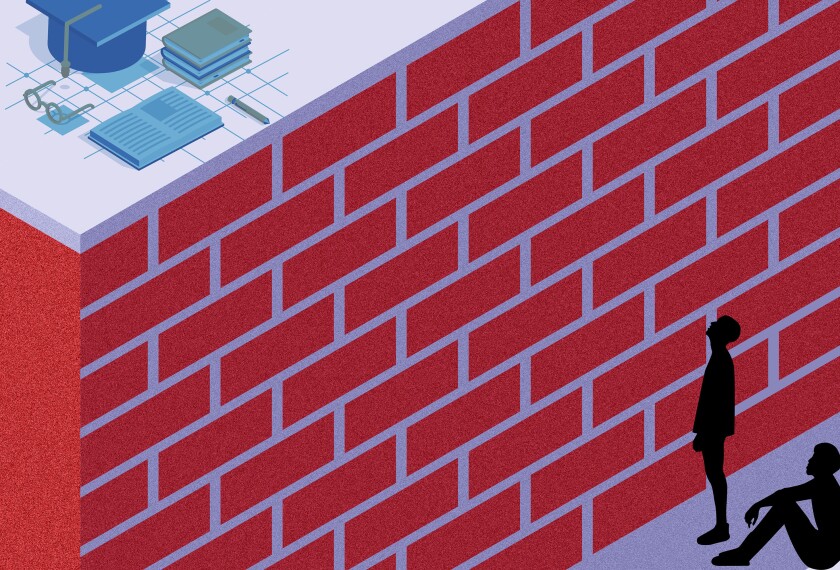Four years ago, a hotly disputed study concluded that schools were being recognized under the popular federal Blue Ribbon Schools Program despite unimpressive academic records.
Return to the main,
Study Finds NAEP Math Questions ŌĆśExtraordinarily EasyŌĆÖ
See the accompanying item,
A follow-up analysis by the Brown Center on 91ųŲŲ¼│¦╩ėŲĄ Policy, released last week, concludes that recent changes to the program have greatly reduced the number of ŌĆ£glaringly undeserving winners.ŌĆØ
The percentage of Blue Ribbon Schools with lackluster academic records, based on state test scores from schools in seven states, fell from 24 percent during the 1999 award cycle to 9 percent in 2003, the study concludes. The number finishing in the top percentile climbed from 27 percent in 1999 to 31 percent last year.
ŌĆ£The misfires have really been reduced,ŌĆØ said Tom Loveless, the studyŌĆÖs author and the director of the center.
The study credits changes the Bush administration made to the program in 2002, which placed more emphasis on academic achievement in the award process. The new selection criteria adopted by the U.S. Department of 91ųŲŲ¼│¦╩ėŲĄ, which sponsors the program, placed greater value on schools serving a significant percentage of disadvantaged students and their performance on state tests. (ŌĆ£Paige Revamps Blue Ribbons, Basing Awards on Testing,ŌĆØ Aug. 7, 2002.)
Still, the study continues to be critical of California, which, like other states, nominates candidates to the federal government, saying the Golden State relies on a ŌĆ£rubric embracing a number of trendy educational practices.ŌĆØ
A ŌĆśMisunderstandingŌĆÖ
But William L. Padia, the director of policy and evaluation for the California education department, strongly disputed that finding, saying it was based on a selective review of only a few state criteria and ignored the stateŌĆÖs evaluation of schoolsŌĆÖ academic records. ŌĆ£ItŌĆÖs a fundamental misunderstanding of our program,ŌĆØ Mr. Padia said.
When the 2000 Brown Center report was issued, critics argued that it overlooked the possibility that simply participating in the Blue Ribbon program would help foster academic improvement among the selected schools, Mr. Loveless said.
In response, Mr. Loveless has re-examined how those original schools have performed since the 2000 report came out. He concludes that they have not improved academically, based on reading and math scores.



